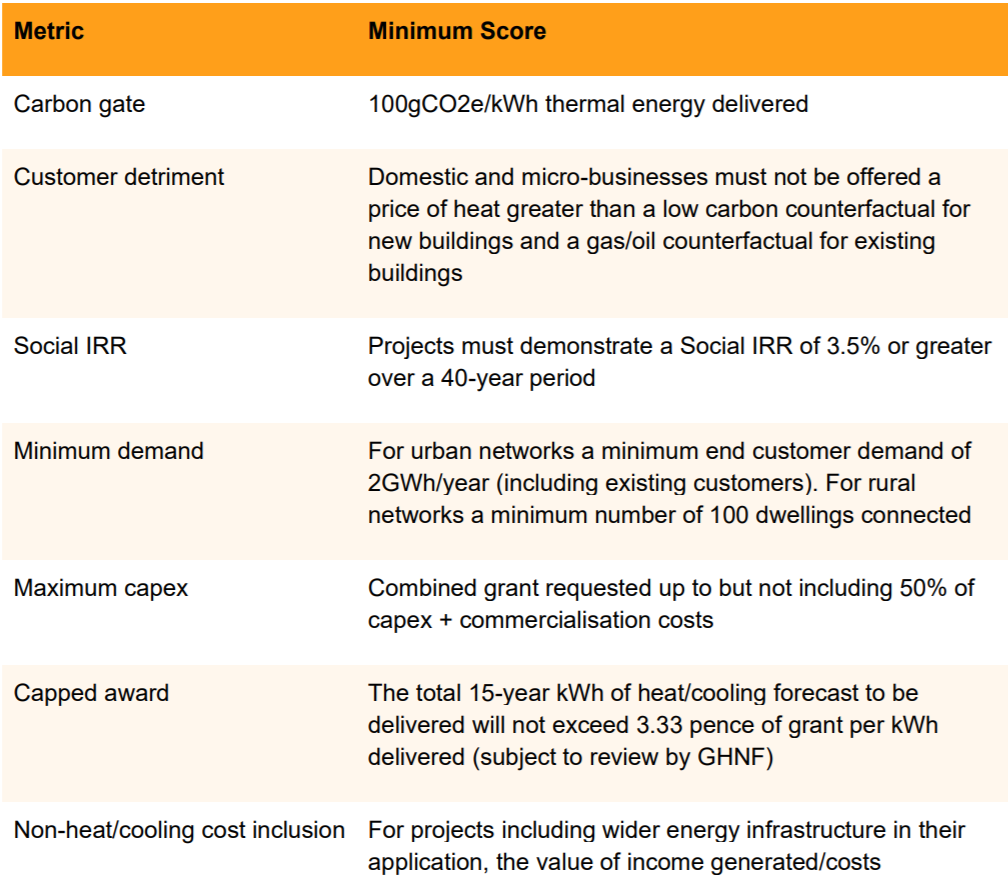News

The Green Heat Network Fund (GHNF)
Posted on 22 June 2021 in News
(Image credit: Rehau)
What is the Green Heat Network Fund?
The Green Heat Network Fund (GHNF) is a £270 million government fund designed to 'Incentivise the heat network market transition to low carbon heat sources via targeted financial support, that will help stimulate the increased deployment of low carbon technologies at scale.' The GHNF Transition Scheme opens Monday 5th July and closes 12th August 2021. Successful applications for the funding could receive up to £1 million toward their project.
Who can apply for the ghnf?
The GHNF is open to all applicants in England responsible for the development of heat networks (including cooling) that meet the Application Gated Metrics, that are able to provide all supporting documentation, and which are legal entities. Individuals cannot apply to the fund.
What projects will be eligible for the GHNF?
The GHNF will support new and existing heat networks that deliver low carbon heat at a volume of heat that is consistent with strategic objectives for heat network market growth in England. A heat network, for the purposes of GHNF, is a series of hydraulically connected pipes that distribute thermal energy to customers, uses low carbon technology and is centrally managed. The GHNF will operate on a principles-based approach for cost eligibility and therefore the list below sets out what the GHNF will not fund rather than specifying a list of what is eligible. The overriding principle that governs eligibility for commercialisation and construction costs for the GHNF, is that application costs are attributed directly to delivering network operation as per the low carbon design intent. Evidence of the low carbon design intent must be submitted as part of the GHNF application.
What will the GHNF not fund?
The list of works that the GHNF will not fund is quite extensive but as an overview it includes:
- Any construction costs that have already been incurred prior to a GHNF award having been made
- Costs associated with constructing heat/cooling sources whose primary function is not the generation of heat/cooling. For example: the cost of constructing an EFW plant would not be eligible, but the cost of interfacing with an existing or planned EFW would be;- the cost of constructing a hydrogen electrolyser would not be eligible but the cost of interfacing with the hydrogen facility would be.
- Costs associated with connecting existing heat/cooling sources where there is a legal requirement for those sources to connect to a network.
- The cost of buying and installing tertiary heat distribution systems. A tertiary heat distribution system is defined as pipework and associated plant that sits behind the customer meter / Heat Interface Unit (HIU). For the avoidance of doubt, an HIU is, for the purpose of GHNF, classified as part of the secondary distribution system, not the tertiary system.
- The cost of changes to existing building fabric such as glazing, ventilation and insulation upgrades.
- The cost of buying and installing plant that uses biogas or syngas, with the following exceptions: Where the heat network is rural off gas grid, it may be used for primary, secondary and peaking plant, provided the biogas or syngas is manufactured on site.
- The cost of first of a kind technology (FOAK). The GHNF is not intended to fund technology that has not been demonstrated to operate in the conditions proposed by the project and at a capacity similar to that required by the project.
- Exclusively agricultural or industrial process heat networks. The GHNF is intended to help address the decarbonisation challenge associated with space heating and domestic hot water production. While a heat network might supply heat to an agricultural or industrial process, the heat network will not be funded under the GHNF unless at least one private commercial /multi-residential/public sector building is connected to the network.
Shared ground loops vs ambient loops
Ambient loops are eligible for funding from the GHNF however shared ground loops (SGLs) are not (subject to some exceptions). SGLs will be supported when they form part of either aggregated communal networks or rural heat networks. The key distinction between ambient loops and SGLs, for the purposes of GHNF, are:
- An ambient loop will distribute 2GWh/year or more of thermal energy; and
- is a centrally managed network.
What are the application gated metrics?
Applicants for the GHNF Transition Scheme must provide a set of metrics outlined in the table below. Applicants must meet these standards in order to be successful for funding. These metrics are calculated and appraised within the application form itself once the applicant has entered all required inputs.

Transitioning from HNIP to GHNF
HNIP (Heat network investment fund) is the predecessor to GHNF and it has its final year in 2021/22. This means there may be a risk of a one-year hiatus between the schemes as projects applying to GHNF will need sufficient time to commercialise in order to apply for construction funding. To manage this risk a GHNF transition scheme, for commercialisation funding only, will be launched in July 2021 with up to two funding rounds closing to new applicants in August and October 2021 (subject to there being funds remaining). Additional funding of £10m has been made available for the Transition Scheme. Projects applying for Transition Scheme funding will still be required to submit the same information as required for full scheme applications; however, the process will be slightly different as we will not have a delivery partner in place to manage the Transition Scheme and instead it will be managed by BEIS.
How to apply for the GHNF
Application for the fund is via an application form. Before you begin the application you'll need to collate several documents such as a business case, technical drawings, company structure, company accounts etc. You can find a checklist of information required in this BEIS guide to the GHNF on page 16. Once the application has been submitted, BEIS aim to provide an award letter or failure notification within 45 working days after the start of a funding round. It is possible to apply for the support of a Business Development Manager to help with the full application for funding, however the applicants will need to have passed the Application Gateway Metrics, completed a techno-economic assessment for the project and have completed a draft business case. You can request an application form and application guidance pack from ghnfcorrespondence@beis.gov.uk - you will also submit your completed application to this email address.
Documents
The documents below provide further information on the GHNF:
 Facebook
Facebook LinkedIn
LinkedIn Twitter
Twitter














